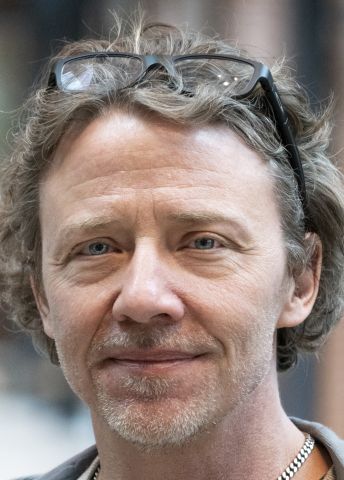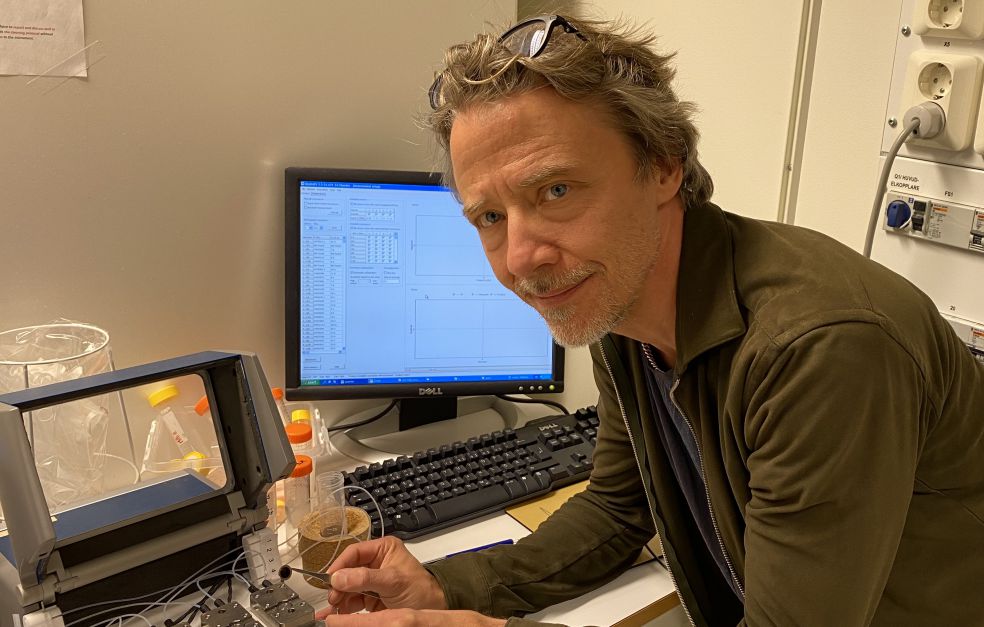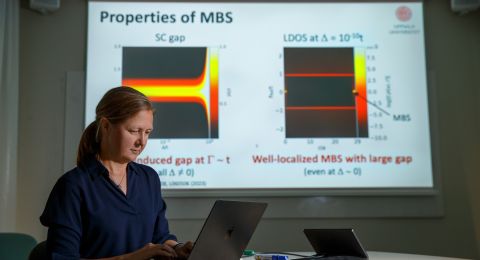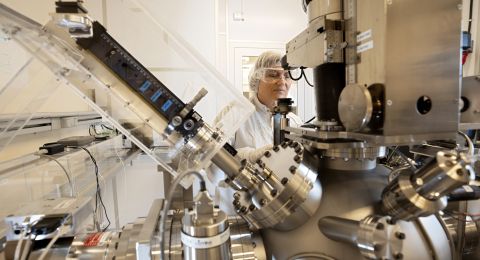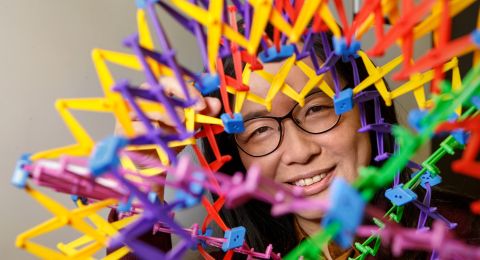How do nanoparticles, such as viruses like Covid-19, penetrate the protective membranes of cells? Wallenberg Scholar Fredrik Höök is developing techniques and methods that may help to answer that question. His work is adding both to our knowledge about how viruses infect cells, and to development of new targeted therapeutics.
Fredrik Höök
Professor of Biophysics
Wallenberg Scholar
Institution:
Chalmers University of Technology
Research field:
Developing bioanalytical tools to study how nanoparticles interact with artificial cell membranes.
In spring 2020 Höök’s research team at Chalmers University of Technology were obliged to “corona-proof” their work, just like everyone else. It turned out surprisingly well, as he explains over the phone from home in early fall:
“We are very much experimentalists, after all. So we decided fairly early on that it was OK to work in the lab if we followed the social distancing recommendations. The seniors among us who didn’t need to be in the lab could work from home. Now we are spending a little more time at the lab again. Physical meetings with colleagues play a key role in the creative process. We have really missed them.”
Höök is professor of biophysics, which uses physics as a basis for studying questions of biological relevance. The biological phenomena he is examining take place at nano level and on the surface of cells. Highly sensitive instruments are needed to study minute structures and particles.
“My team and I are driven by a desire to solve problems that have mostly been identified by scientists more concerned with biological, medical and diagnostic issues. We contribute by developing technologies and methods, acquiring broad knowledge along the way,” he says.
Early in his career Höök was involved in developing and commercializing a successful tool for analyzing surfaces – QCM. Over the years, his research team has developed multiple new technologies.
“The QCM method gave us a unique ability to create and study structures that resemble cell membranes. Since then we have learnt how to help solving problems relating to the function of cell membranes and organelles in cells.”
Healing nanocapsules
In addition to his own research team, Höök is Director of Formulaex, an industrial research center working to develop new methods of treating serious diseases. The idea is to benefit from and mimic the body’s own processes for communication between cells. New biological drugs are encapsulated in nanoparticles. Once they are in the body, the particles seek out specific cells, penetrate the cell membrane and recode the genetic machinery of the cells.
“It is quite possible that we will be vaccinated with a Covid-19 vaccine that is either a virus that has been genetically modified or one with an artificial carrier of genetic information that programs our immune cells to recognize and repel a Covid-19 infection. But at Formulaex we do not work on vaccines; our task is to understand the fundamental mechanisms needed to make therapeutics of this kind effective and safe.”
All bodily fluids contain exosomes. These are minute vesicles that detach from the cell membrane and communicate biological signals and genetic information between cells. The scientists are attempting to mimic this process in the laboratory using an artificial cell membrane and nanocapsules.
When a nanocapsule is injected as medication, it meets a complex environment full of proteins and biomolecules in the blood, or in the throat if the drug is administered via a nasal spray. Höök continues:
“The molecules bind to these nanoparticles, and the interaction appears crucial to how they are then taken up and processed by cells. We want to identify the key proteins, quantify those that bind to the particles and at what rate. Ideally, we want to do this at the level of individual nanoparticles, so we can identify precisely the characteristics that are important.”
Unexpected observation
The grant that Höök has been awarded as a Wallenberg Scholar gives him the freedom to devote time to unexpected discoveries.
“Questions sometimes pop up as a result of unpredictable observations. We are able to make the most of our experience in identifying what it important.”
Höök gives an example.
“When we were developing the QCM method an issue arose that everyone knew made it harder to interpret data. But no one had the faintest idea how to solve the problem. We now think we know exactly what to do. It’s a question of extracting all the information in a reading containing a huge number of parameters.”
The discovery is crucial in working out how nanoparticles bind to proteins inside the body.
“It’s a step forward in purely analytical terms, enabling us to quantify and gain an entirely new understanding of what we are studying.”
“Suddenly something unexpected happens in our analysis of the data we have collected. I get a feeling that what we have noticed is something valuable that should be pursued. This grant gives me that opportunity.”
Essential collaboration
If Höök had to choose just one question he would like answered, it would be how nanoparticles manage to breach the protective cell membranes. The answer to this classic question has so far eluded many scientists.
“By extension, the question is then how the novel corona virus infects the cell. Simply put, cells eat nanoparticles. Some enter the cell; others are destroyed. I want to understand what determines their fate. When we try to simulate the biological process, it’s always less effective. We think we’re getting closer to finding out why that is. Basic biophysics is needed to succeed, and close collaboration between multiple disciplines,” he adds.
Text Susanne Rosén
Translation Maxwell Arding
Photo Adrian Gonzalez, portrait Johan Bodell
